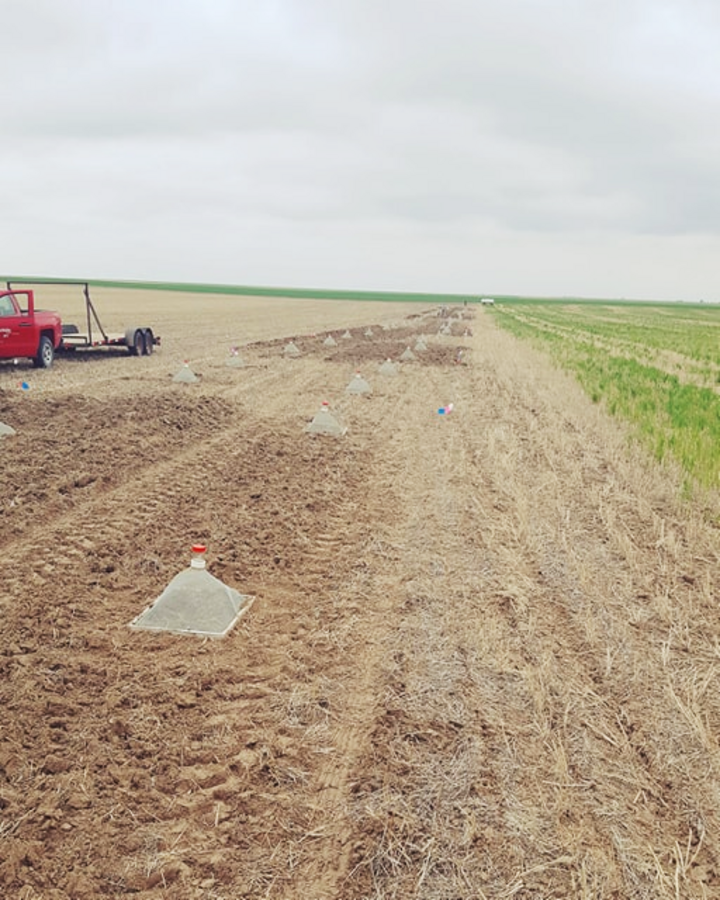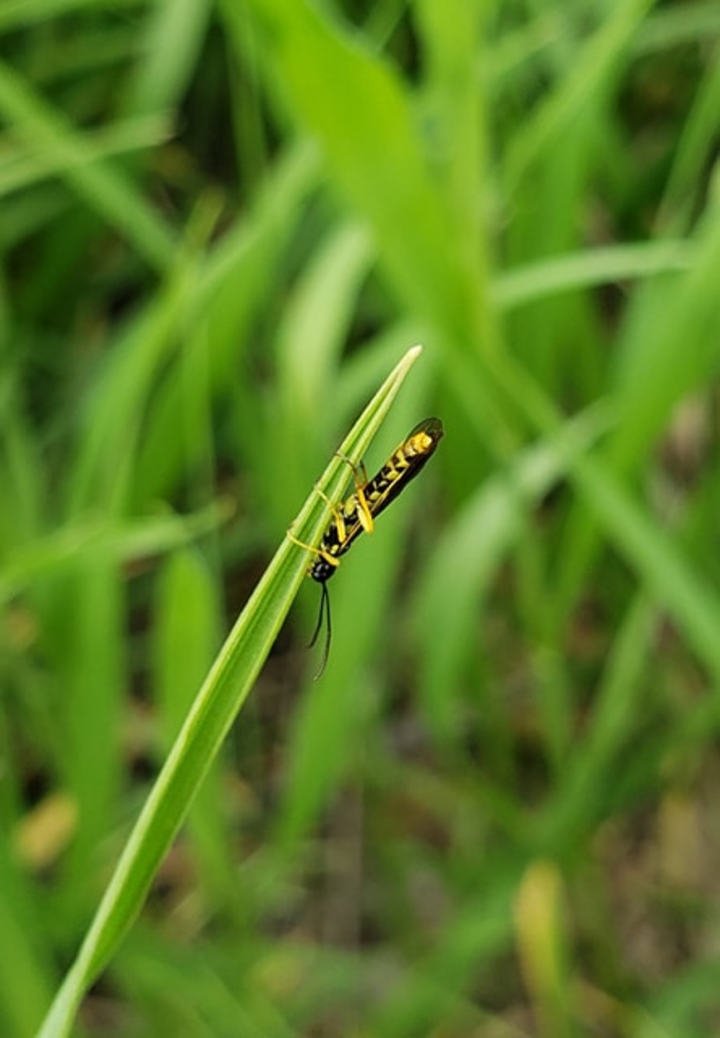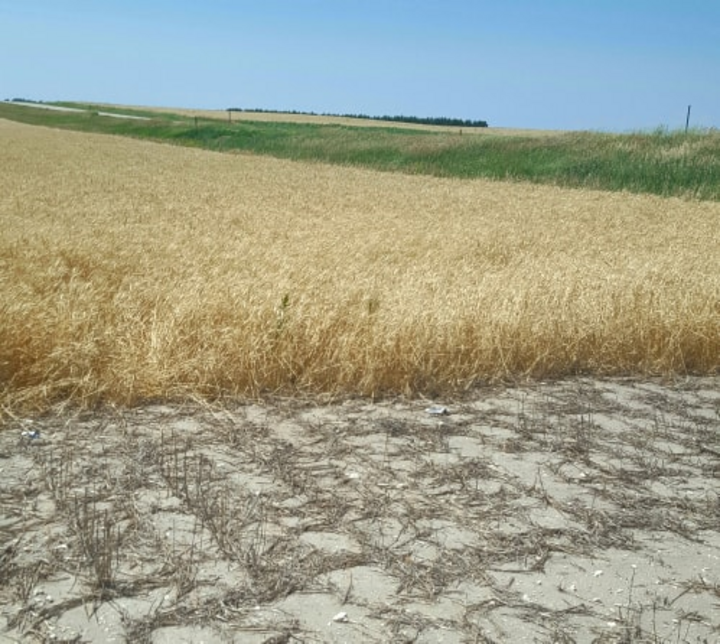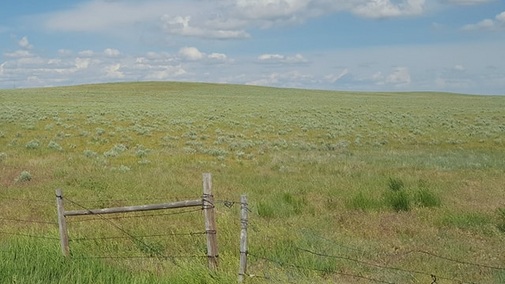The wheat stem sawfly (WSS) is a native stem-mining insect pest of economic importance within the Great Plains. During the agricultural revolution of the late 1900s in the Northern Great Plains, the native WSS transitioned from infesting only large hollow-stemmed wheatgrasses to infesting the introduced cultivated spring wheat fields. By the end of that century, independent sawfly populations adapted an earlier emergence period (of approximately three weeks) allowing it to successfully infest earlier-maturing winter wheat crops and expand into the High Plains of Nebraska (Figure 1).
Over the last decade, these WSS populations have increased dramatically in the Nebraska Panhandle, with the highest recorded populations in wheat fields in Box Butte and Cheyenne counties.

In Nebraska, the sawfly’s lifecycle begins with adult emergence, peaking at the end of May in the southern Panhandle and the beginning of June in the northern Panhandle. During the adult WSS’s emergence from wheat stubble, female sawflies stick their ovipositor inside large hollow-stem wheat tillers and insert a single egg in each stem. After a week, the larva hatches from the egg and feeds on the inside of the stem for approximately one month. Once the host plant begins to desiccate, the sawfly bores downward to the base of the stem above the crown, cuts a notch in the stem, and fills the top of the stubble with a frass plug. This is where the pupal sawfly hibernates until emergence next spring. WSS infestations impact wheat through both stem lodging and decreased wheat yields.
During the sawfly’s lifecycle, there are two windows of opportunity when management decisions may significantly reduce WSS pressure. The first management practice impacts the overwintering WSS pupal stage with a spring disk operation in wheat fallow. Dryland wheat under no-till practices help conserve soil moisture and nutrients; however, this practice, unfortunately, can also help conserve sawfly pupae. When tillage is applied to dryland fallow, one risk is the depletion of soil and soil moisture. This risk can be greater with fall tillage (depending on soil type).
One benefit to spring tillage, for sawfly control, would be the generally wetter, clumpier soils in the spring may allow for less aggressive tillage practices to have a greater reduction of sawfly survival. Our on-farm research with a tandem disk, has shown significant reduction of sawfly survival on dryland fallow (Figure 2). It is likely that simply turning the stubble “upside down” within the dirt clods is sufficient for preventing sawfly emergence. A single pass using a tandem disk in late April to early May could help reduce WSS populations up to 80%.
The second management practice impacts the surrounding grassland landscapes, rather than the wheat field. Present-day sawfly populations in Nebraska still retain their ability to infest native and nonnative grasses, such as smooth brome, intermediate wheatgrass, and western wheatgrass, but with much lower survival. Due to successful breeding, wheat stands have little variation between wheat tillers, regarding stem height and width. However, non-cultivated grasses still retain much of their original genetic variability and are more susceptible to fluctuations in temperature, precipitation, and soil type. Sawflies that infest these feral grasses have a lower survivability due to their narrower inner stem or thicker stem wall.


Figures 3-4 (L-R): Adult wheat stem sawfly on a smooth brome leaf within a tree-row windbreak adjacent to winter wheat fallow; smooth brome, and intermediate wheatgrass growing adjacent to a winter wheat field in the ditch.
The WSS larva trapped within feral grasses may create an ideal condition for the WSS’s natural enemies: two species of braconid parasitoids. Bracon cephi and Bracon lissogaster attack the WSS’s larval stage living within the stem. The parasitoids have two complete life cycles in the summer, emerging one to three weeks behind peak WSS densities and approximately one month later. Female parasitoids locate WSS larva within a stem, stick their ovipositor inside, and paralyze the WSS larva. Then they insert their own egg(s) into the stem to feed upon the paralyzed WSS larva. The parasitoid may complete development and form a silken cocoon within the stem, either emerging in the summer or overwintering inside the stem to emerge the following summer.
From our studies, grasses able to host this unique dynamic between the WSS and its natural enemies include smooth brome, intermediate wheatgrass, and western wheatgrass. Grasslands, tree-row windbreaks (Figure 3), ditches (Figure 4), CRP ground, unfarmable areas surrounding power poles, etc. may all be great habitats for the conservation of these parasitoid populations. In order to increase the likelihood of successful parasitoid conservation, growers may consider reducing mowing and not disturbing grassy areas with smooth brome and wheatgrasses, as their presence may be vital for the health of wheat.
As we continue to study management options that can decrease WSS pressure in winter wheat, two options seem to successfully provide a level of control for WSS in the Nebraska Panhandle ― spring tillage of wheat fallow and the conservation of surrounding grasslands. By choosing management techniques that target specific WSS life stages, we may be able to impact WSS populations by simply managing the soil and grasses within which they live.

